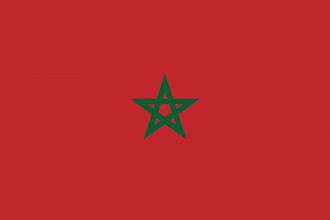The Moroccan Aerospace industry dates back to the 1950’s, when it developed expertise in aircraft maintenance for civil and military aviation. Since then, the sector has recorded significant growth, with new activities in the manufacturing of seats, harnesses, metallic assembly parts, as well as with engine maintenance and repair. Many international companies have created plants in the country, including subsidiaries of the Safran Group – such as Aircelle, Labinal, Morpho, Safran Engineering Services, Matis (JV of Boeing & Labinal), Sagem, Snecma-, as well as DAHER, Zodiac Aerospace, THALES, Esterline, and more recently Bombardier, Stelia, and United Technologies (UTAS).
This growth has been partly fostered by the Safran Group, as a key ‘global’ player with a diversified and of high integration supply chain. In addition, the governmental incentives targeted at potential investors, including corporate tax exemptions, financial subsidy as a percentage of total investment, financial contribution for training costs, as well as a set of specific measures adopted to support innovation by the Snecma Morocco Engine Services (SMES) corporation, have all had positive results. In addition, the development of a dedicated industrial free (trade) zone –extending over an area of more than 140 hectares, namely the “Aeropole”, in Casablanca –with high proximity to Europe- has attracted many foreign investors. Moreover, the IMA (Institut des Métiers de l'Aéronautique) education centre specialised in providing training on aerospace industry related skills and specialties, was created in an effort to boost the local industry’s competitiveness, by covering the needs for a highly-skilled labour workforce, as well as continuing training for managers. With a current capacity of 400 trainees per year and plans to double its capacity (to 800 trainees) in the near future via a €2.5 million investment in upgrading and expanding its installations, IMA operates under GIMAS (Moroccan Aerospace Industries Association).
Towards this direction, in July 2016, VI International Aviation Academy (AIAC) of Morocco signed a Memorandum of Understanding (MoU) with the Brazilian Embraer, for the development of training programs, for engineers in aerospace and related areas (in the Moroccan territory). When this program will be implemented, Morocco will have managed to address further the demands of its aerospace sector, by creating a base of engineers of a world-class standard.
Today, the Moroccan Aerospace Industry sector, comprises of more than 110 companies, employs about 11,000 people and has an export revenue of €0.9 billion (See Infographic below). However, the local defence industry itself, is under developed, making Morocco mostly dependent on imports. Recently however (December 2015), a US $22 billion funding agreement with Saudi Arabia was signed, through which Saudi Arabia agreed to finance the development of a national ‘embryonic’ military, aiding the country to become a producer of weapons, thus in turn gaining an important role in the International Defence Industry.
 Source: http://gimas.org/
Source: http://gimas.org/

